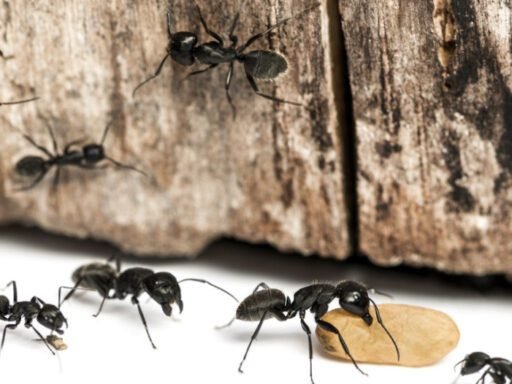In recent years, lawsuits related to Aqueous Film-Forming Foam (AFFF) have surged, with plaintiffs alleging harm from exposure to the chemicals in firefighting foam. These legal actions have led to significant settlements and judgments against manufacturers and distributors.
Understanding these developments and their implications is crucial for all stakeholders involved in these complex legal proceedings.
As we delve into 2024, the trajectory of AFFF lawsuits is anticipated with developments shaping the landscape of litigation and potentially setting new precedents.
Current Landscape of AFFF Foam Lawsuits
The current landscape of AFFF lawsuits is marked by a significant increase in legal actions and settlements. According to Forbes, the number of AFFF lawsuits went over 6000 in October 2023. 111 new cases were added in this class of lawsuits. By March 2024, the number of lawsuits went up to more than 7000 cases.
The legal proceedings concerning firefighter foam are advancing through multidistrict litigation (MDL) or AFFF class action in the United States. These lawsuits target 25 distinct companies, among them Tyco Fire Products, DuPont, and 3M.
The manufacturers and distributors of AFFF are facing mounting pressure as more plaintiffs come forward with claims of health issues. The health problems stem from contact with the foam’s chemicals, specifically per- and polyfluoroalkyl substances (PFAS).
TruLaw reports a 56% higher risk of thyroid cancer in individuals with elevated linear PFOS levels. Linear PFOS, a PFAS found in firefighting foam, is implicated in the AFFF firefighting foam lawsuit, offering potential advantages for plaintiffs.
Moreover, regulatory bodies and lawmakers are increasingly scrutinizing the use of AFFF and the handling of PFAS, adding complexity to the legal landscape.
Recent firefighter foam cash settlements have reached hundreds of millions of dollars, indicating the seriousness and scope of the issue. The U.S. District Court for the District of South Carolina was scheduled to conduct a fairness hearing for the $1.18 billion DuPont settlement in the AFFF multidistrict litigation. Accompanied by a $10.3 bn settlement from 3M, this agreement cautiously marked the initial phase of lawsuits addressing the grievances of municipal water suppliers.
Factors Influencing Settlements
There are several factors that will determine the amount of compensation each victim receives in an AFFF lawsuit.
- The strength of the plaintiffs’ evidence linking their health issues to AFFF exposure.
- The level of negligence or misconduct attributed to the defendants.
- And the potential financial impact on the defendants.
The duration they have been exposed to this product and how severely they have been compromised also matters a lot. Consumer Shield reports that compensation tiers and anticipated amounts for individuals exposed to AFFF rely on the provided sources.
The estimated range for Tier 1 settlements or higher compensation ranges from $200,000 to $500,000. Tier 1 applies to individuals who have encountered severe medical issues due to AFFF exposure.
Tier 2 cases, estimated between $150,000 to $280,000, involve individuals with health concerns related to AFFF exposure, albeit not as severe as Tier 1 claimants.
Tier 3 cases or lower settlement provides compensation of $75,000 or less. These cases typically cover individuals with mild health issues related to AFFF exposure as compared to Tier 1 or Tier 2.
Anticipated Developments in 2024
There may be heightened regulatory scrutiny and legislative action aimed at addressing the environmental and health impacts of PFASs, the key components of AFFF. Connecticut’s Attorney General initiated two lawsuits against 28 chemical manufacturers, accusing them of deliberately polluting the state’s water with PFAS chemicals. These legal actions seek to enforce accountability for PFAS contamination stemming from two primary sources:
- The use of AFFF in firefighting, and
- The inclusion of PFAS in various consumer products such as food packaging, cookware, textiles, and cosmetics.
Advancements in scientific research on the health effects of PFAS may provide new evidence for plaintiffs and impact the outcomes of ongoing and future lawsuits.
Impact on Affected Parties
Individuals affected by health issues from AFFF exposure may find hope in developments like heightened litigation and larger settlements, seeking long-awaited justice. The potential for heightened regulatory scrutiny and legislative action may also offer hope for stricter regulations on PFAS chemicals, potentially reducing future exposure risks.
However, the legal complexities and uncertainties surrounding these cases could also lead to prolonged litigation and increased financial burdens for affected parties.
Overall, the impact of these trajectories is likely to be multifaceted, with both positive and challenging implications for individuals and communities affected by AFFF.
Future Trajectories and Legal Strategies
Future trajectories and legal strategies in AFFF foam lawsuits are expected to be influenced by several key factors. One important aspect is the continued evolution of scientific understanding regarding the health effects of PFAS chemicals and AFFF exposure.
According to Consumer Notice, out of the 7,367 AFFF lawsuits filed in the MDL by March 2024, 7,170 are still pending and awaiting resolution.
MDL 2873 includes claims from individuals across several states and water supply companies seeking compensation for filtering chemicals from AFFF out of drinking water. There might be additional cities and individuals who pursue health-related claims against 3M and other manufacturers, potentially leading to more multidistrict or individual lawsuits.
As new research emerges, legal strategies may adapt to leverage this information in courtrooms. Additionally, the outcomes of ongoing cases and settlements in 2024 could set important precedents for future litigation, shaping the legal landscape for AFFF lawsuits.
Furthermore, the response of regulatory agencies and lawmakers to the PFAS contamination issue will likely influence legal strategies. It is expected that changes in regulations could impact liability and the strength of plaintiffs’ cases.
Regulatory and Industry Responses
Regulatory and industry responses to AFFF foam lawsuits have been evolving in light of growing concerns about PFAS chemicals. Regulatory agencies, like the Environmental Protection Agency and state environmental agencies, are considering or implementing stricter regulations on PFAS, including those found in AFFF. These regulations could impact the use, storage, and disposal of AFFF, potentially reducing future exposure risks and affecting legal liabilities.
In response to legal and regulatory pressures, some industries have stopped the use of AFFF-containing PFAS chemicals in favor of alternative firefighting foams.
Moreover, there has been a rise in investment in researching and developing safer substitutes for products containing PFAS. These efforts demonstrate an increasing acknowledgment of the environmental and health hazards linked with PFAS chemicals and a commitment to mitigating these risks.
Public Awareness and Advocacy Efforts
Public awareness and advocacy efforts surrounding AFFF foam lawsuits have been instrumental in bringing attention to the issue and pushing for change. Advocacy groups, environmental organizations, and affected communities have been actively raising awareness about the health and environmental impacts of PFAS chemicals found in AFFF.
These efforts have helped to mobilize public support for regulatory action and legal reforms aimed at addressing the risks associated with PFAS exposure.
In addition to raising awareness, advocacy groups have been supporting affected individuals and communities in their legal battles against AFFF manufacturers and distributors. These groups provide resources, legal assistance, and a platform for affected parties to share their stories and advocate for justice.
In conclusion, the landscape of AF foam lawsuits is rapidly evolving, with 2024 poised to be a pivotal year. Anticipated developments, including increased litigation, regulatory scrutiny, and scientific advancements, will likely shape the trajectory of these lawsuits.
As the legal and regulatory landscape evolves, it is essential to closely monitor these developments to understand their implications for all stakeholders involved.






